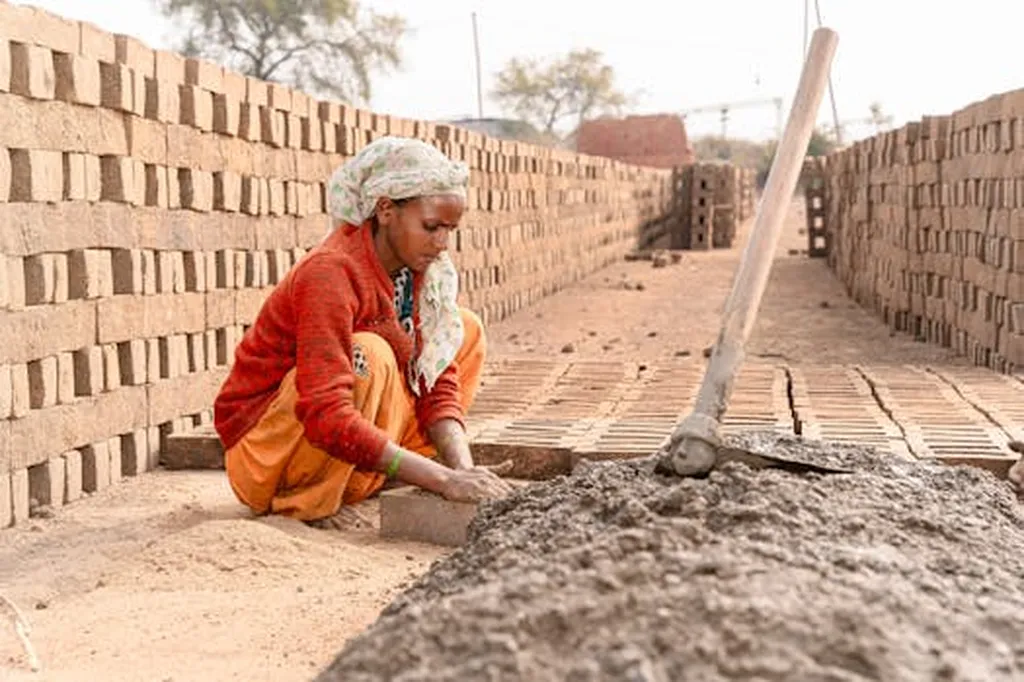In a breakthrough that could reshape the construction industry, researchers have developed a novel way to enhance the thermal insulation properties of fired clay bricks using a biodegradable polymer derived from crustacean shells. This innovation, published in the journal *Scientific Reports* (translated as *Nature Research: Scientific Reports*), offers a promising avenue for improving energy efficiency in buildings, a critical factor in reducing global carbon emissions.
At the heart of this research is Dr. M. Abdelhamid Shahat, a scientist at the Solar and Space Research Department of the National Research Institute of Astronomy and Geophysics (NRIAG) in Egypt. Dr. Shahat and his team explored the potential of chitosan, a biopolymer derived from chitin, to improve the thermal insulation of clay bricks. “We were looking for a sustainable and effective way to enhance the performance of traditional construction materials,” Dr. Shahat explained. “Chitosan, with its unique properties, emerged as a promising candidate.”
The team prepared a series of composite samples with varying concentrations of chitosan (CS) and subjected them to rigorous testing. They employed techniques such as X-ray diffraction (XRD), Fourier-transform infrared spectroscopy (FTIR), and field emission scanning electron microscopy (FESEM) to analyze the structural and morphological changes. The results were striking. The introduction of chitosan led to improved crystalline organization, as evidenced by increased XRD peak intensity. FTIR spectra revealed the presence of new functional groups associated with the chitosan, while SEM micrographs confirmed the development of a more porous microstructure.
One of the most significant findings was the enhanced thermal stability of the chitosan-modified bricks. “The addition of chitosan not only improved the thermal insulation properties but also enhanced the overall durability of the bricks,” Dr. Shahat noted. The bricks exhibited a reduction in bulk density and an increase in porous topography, which contributed to their improved thermal performance. Notably, the clay@CS (6%) mix achieved the lowest thermal conductivity value, indicating its superior insulation capabilities.
The implications of this research for the construction industry are profound. Buildings account for a significant portion of global energy consumption, primarily due to heating and cooling requirements. By incorporating chitosan into clay bricks, developers can create more energy-efficient structures that require less energy to maintain comfortable indoor temperatures. This innovation could lead to substantial energy savings and a reduction in carbon emissions, aligning with global sustainability goals.
Moreover, the use of chitosan as a sustainable additive underscores the potential for biodegradable materials in construction. As the world seeks to move away from petroleum-based products, this research offers a viable alternative that is both effective and environmentally friendly. “Our findings highlight the importance of exploring natural and biodegradable materials for construction applications,” Dr. Shahat said. “This approach not only enhances the performance of building materials but also contributes to a more sustainable future.”
The research published in *Scientific Reports* opens new avenues for the development of advanced construction materials. As the industry continues to evolve, the integration of innovative technologies and sustainable practices will be crucial in meeting the challenges of the 21st century. Dr. Shahat’s work serves as a testament to the power of scientific inquiry and its potential to drive positive change in the world.
In the coming years, we can expect to see further advancements in the field of nanocomposite materials, with a focus on enhancing the thermal and mechanical properties of construction materials. The research conducted by Dr. Shahat and his team at NRIAG is a significant step forward in this direction, offering a glimpse into the future of sustainable construction. As the industry embraces these innovations, we can look forward to a built environment that is not only more efficient but also more harmonious with the natural world.

